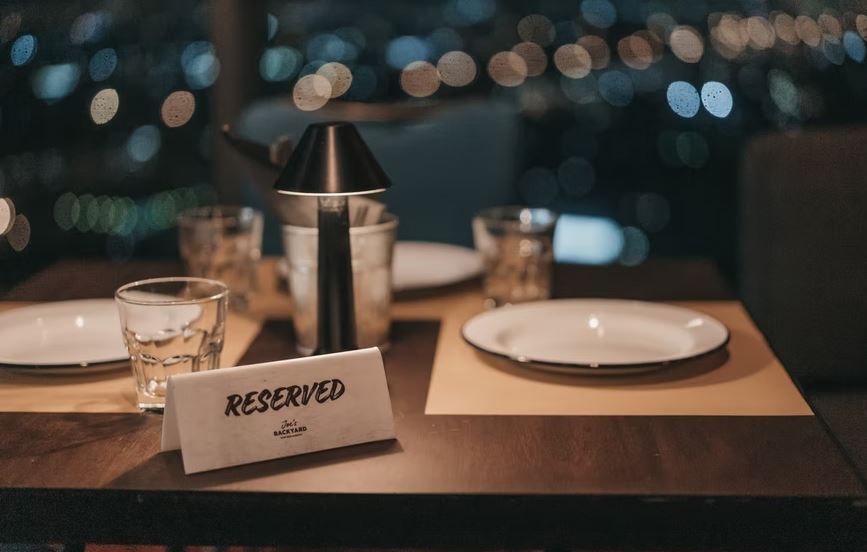Goals tend to lean toward recipes, kitchen, processes, ordering strategies, branding, social media promotion, and more when developing a plan for success in opening a new fast-casual restaurant. Developing a script, strategy, and training factor for how to greet customers as they enter your restaurant frequently falls to the bottom of the priority list. As the owner or general manager of the restaurant will quickly realize, how you greet your customers has an important influence on overall customer satisfaction.
Consider how many times you have entered a restaurant to take a look and consider dining there, only to turn around and leave. Perhaps it was too crowded. Maybe you did not get hooked fast enough. As a restaurant owner or manager, you must train new servers on how to greet customers. It is a skill they should develop because a good greeting can make the difference between keeping a customer and losing them.
1. “Fill the place with a Smile”
While you may be sick of hearing the same tired cliché, it is true: “first impressions matter,”, especially to restaurant customers. Furthermore, the tone of the interaction will be set by your body language, so begin with a smile. Before you even say hello, make sure your expression conveys that you are pleased to see the customer walk through the door. Keep in mind, however, that the best way to make a strong first impression is to smile with sincerity. A genuine smile demonstrates that you care about your customer.
2. “Address them respectfully and politely”
Offer a welcome greeting as soon as guests walk in the door and flash your smile. When greeting individual customers, use “sir,” “ma’am,” and “miss.” It is a hot button trigger when a customer feels mistreated by an establishment. Furthermore, there is a good chance that being disrespected will cause them to avoid doing business with the establishment in the future. In the world of fast-casual dining, it only takes a few seconds to make new customers feel respected. Customers are far less likely to leave and go elsewhere after being greeted warmly and respectfully.
3. “Act Quickly but Polite”
In a fast-casual restaurant, where the customer approaches the counter to place an order, the order-taking should be viewed as an extension of the greeting. The customer is still on his or her feet, not comfortably seated, and already “seated,” as it were. After greeting the customer, politely inquire whether they would like to try a different menu item you are currently promoting, if applicable. This quick suggestion will not come across as aggressive to the customer if it is delivered cheerfully. Maintain a friendly demeanor as you resume by asking if they are ready to order. Aiming it as a question avoids putting them under immediate pressure to make a decision, but it does get the ball rolling.
4. “Listen Attentively”
Paying attention to detail is essential for getting the order and service right. If the order by merely saying the item’s name, remember to ask them any pertinent questions that may be important to get the order correctly, even if they did not think to provide the information. Remember to keep eye contact because it will help you become a better listener.
5. “Utilize Resources From an Established System”
All of these suggestions may appear simple, but effectively greeting and welcoming a customer is incredibly nuanced. Professional consultants, believe it or not, have made a living by teaching restaurant owners and their employees how to provide better customer service, including greetings. Training is essential whether you are doing it on your own or with the assistance of others. Rather than going it alone, restaurant owners can greatly benefit from becoming franchise owners. A franchise agreement contains pre-packaged best business practices and training objectives that have been honed and improved through trial and error. By hiring people with positive attitudes, even a trained greeting using a script can provide an authentic welcome that kicks off your customer’s visit — ultimately leading to a more satisfying customer dining experience that your restaurant will provide.
6. “Resolution of Disagreements”
When a dispute arises between a waiter and a customer of a restaurant over the waiter’s first impression, the waiter must first try to settle the customer on his own. The key to customer satisfaction is to address the customer immediately and provide a solution for the situation about which the customer complained, rather than making excuses for making a poor impression.
7. “Always be Clean”
A single flaw in cleanliness can ruin an otherwise excellent waiter and dining experience. This emphasizes the importance of keeping your workplace clean at all times. That includes more than just the dishes, silverware, and tablecloths. It also entails keeping your clothes and overall appearance neat. Do you have stains on your apron? It’s time to replace it. Is your hair out of place? It’s time to take two minutes, look for a mirror, and fix it. Furthermore, your appearance is as important to the overall experience as the food and decor. Make it as perfect as you can. Turn your attention to the entire restaurant once your appearance and tables are in order. This simple act, and many others like it, can have an impact on how all of your guests perceive their surroundings. Doing everything you can to keep things clean can result in happier customers and larger tips for you.
8. “Managing Difficult Costumers”
Make an extra effort to pay attention to these guests and go out of your way to show that you are going out of your way for them. Make it clear because they usually just want to be given special treatment than everyone else. Make a point of emphasizing the special things you’re doing for them. Taking special care of difficult guests, or the person who is paying or in charge will ensure your success and their trust in you, resulting in a higher tip average. When a customer is overly rude or overly needy, treat them with respect. Be gracious and apologetic.


